Troubleshooting
1. Carburetor problems are usually caused by dirt in the float chamber and clogged jets, resulting in a weak mixture or loss of power over a range of engine speeds. In this case, the problem is solved by a complete cleaning. If the carburetor is badly worn, the engine may run erratically, caused by air getting in through the throttle shaft bearings.
Bulkhead
2. Although some operations can be performed on the installed carburetor, the following paragraphs describe the cleaning and adjustment procedures that are carried out after removing the carburetor from the intake manifold. If the carburetor is worn or damaged, it must be replaced or rebuilt, for which contact a specialist.
3. Note the location and direction of the damper vacuum hoses, and disconnect them.
4. Unscrew the four mounting screws and lift the top of the carburetor from the bottom.
5. Remove any remaining fuel from the float chamber. Inspect the float chamber for corrosion, sludge, or carbon deposits.
6. Knock out the pivot pin and remove the float, then remove the float regulator needle. Shake the float to make sure there is no fuel in it, and also check the condition of the pivot shaft. Carefully check the condition of the float regulator needle so that the anti-vibration ball moves freely and the tip of the needle is not worn.
7. Remove the fuel filter from the inlet. This filter must be replaced.
8. Loosen the mixture adjustment screw and inspect its tip for damage or wear.
9. Turn off four screws of fastening, and get the block of the accelerating pump. Check diaphragm condition (see illustration).
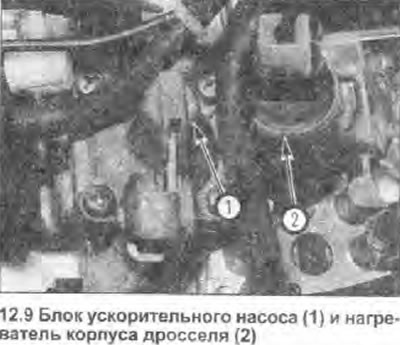
10. Using a screwdriver as a lever; carefully remove the accelerator pump jet from its location in the housing. Then shake it, you should be able to hear how the ball moves inside. If the ball does not move, then it is jammed and the jet needs to be replaced.
11. Note the locations, then remove the primary idle jet assembly and both main jets.
Note: Remaining jets or emulsion tubes cannot be removed. Make sure the channels from the float chamber to the emulsion tubes are not clogged.
12. Unscrew the two mounting screws, and remove the economizer valve block. Check the function of the diaphragm and inspect it for signs of damage.
13. Check the condition of the secondary throttle vacuum hose. If there is a vacuum pump, connect it to the nozzle and operate until the diaphragm activates. If the diaphragm is not working, or if it does not hold a vacuum for at least 10 seconds, replace it.
14. To remove the diaphragm assembly, remove the pin securing the assembly to the upper housing (see illustration), unscrew the three mounting screws and remove the damper cover. The pull-down diaphragm can be removed by removing the star mounting bracket.
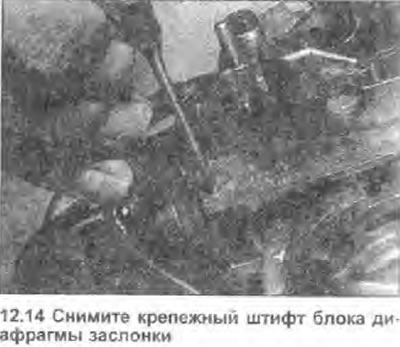
15. Clean carburetor parts, internal passages, float chamber, jets and other components in clean gasoline, and blow everything out with compressed air. Although the choke housing cover can be removed for inspection, it is best to have the choke and fast idle screw installed by a Skoda dealer or a specialist, as this requires special equipment.
Note: Do not apply compressed air to the passages unless the diaphragm has already been removed, as this will most likely result in damage.
16. For assembly, prepare new gaskets. If the diaphragm assembly and shroud have been removed, use a new roll pin and star bracket to secure them during installation. Replace all components including vacuum hoses, linkages, and other connections that are in doubt.
17. Before assembly, make sure that all contact surfaces, jets and channels are perfectly clean.
18. Assembly is carried out in the reverse order, taking into account the following points (see illustrations).
 | 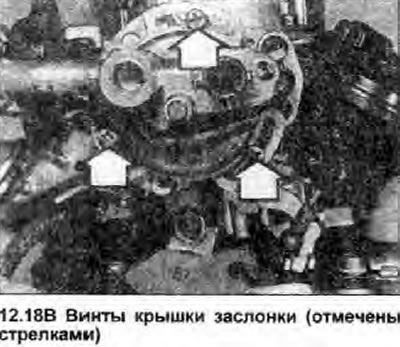 |
- A) Make sure the main jets are placed correctly.
- b) The seal on the pump jet must be replaced. The jet tip must be centered as indicated (see fig. 4.7). The tip should protrude above the top edge of the diffuser at a distance of 22-24 mm.
- c) When installing the mixture screw, replace the small seal, then insert the screw and tighten it by hand until it stops, then unscrew the screw three full turns from this position. This will give an approximate setting for starting the engine.
- d) The float regulator needle must be installed with the ball facing out. The top of the float adjuster needle should fit into the groove in the adjustment.
- e) Before installing the top of the carburetor, check the height of the float. To do this, hold the upper body at an angle of 30°, and with the float tongue just touching the ball of a fully closed needle, check that the distance between the upper body and the top of the float corresponds to the data given in Specifications (see fig. 4.8).
- f) Where this is not normal, make sure the needle is placed correctly. The plastic float cannot be adjusted in any way. If the float height is wrong. float and/or needle must be replaced.
- g) If the damper housing cover has been removed, align the mark on the cover with the corresponding mark on the upper housing before installing it. Tighten the three fixing screws.
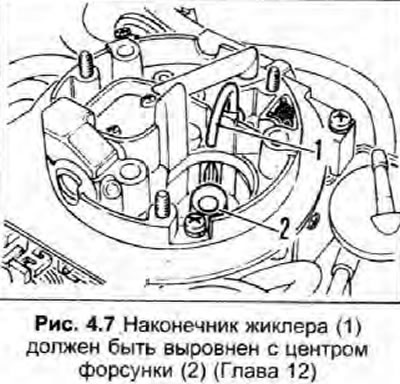
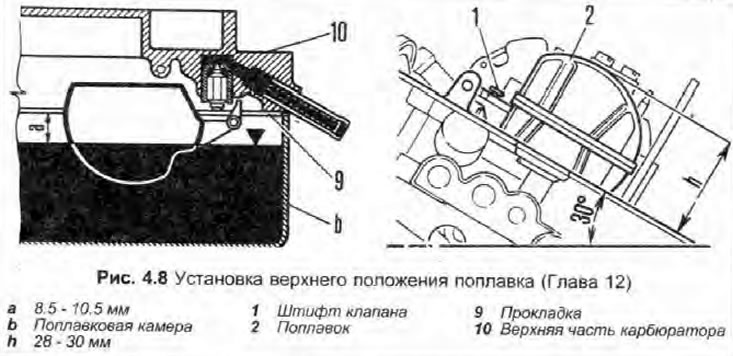
19. Install the carburetor, then check the idle speed and mixture as described in Section 1.
